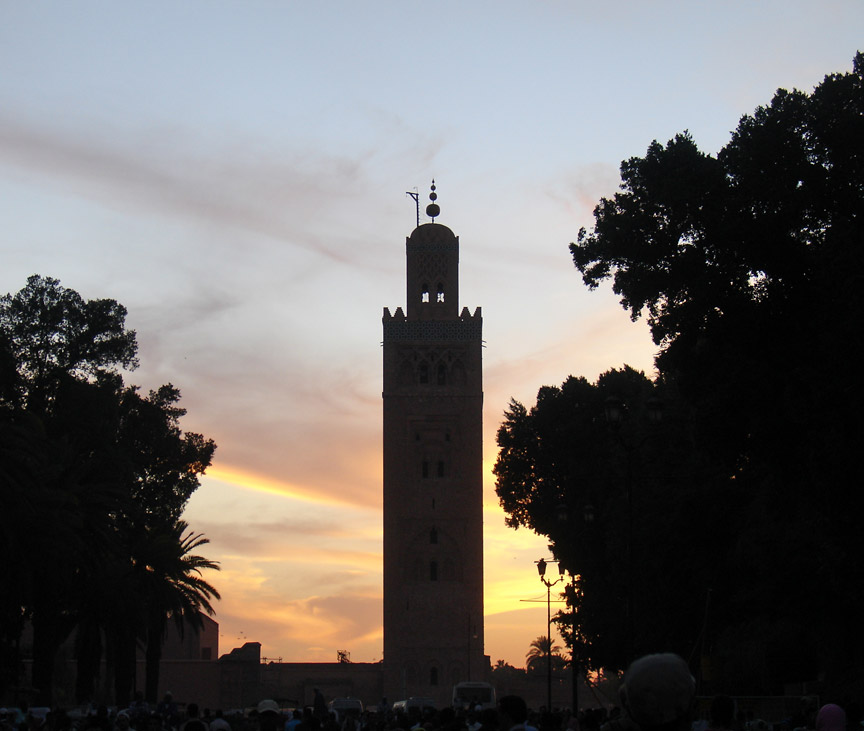

Djemaa el Fna
at 3:00 PM in the afternoon

Djemaa el Fna
Djemaa el Fna (Arabic: جامع الفناء jāmiʻ al-fanāʼ) is a square and market place in Marrakesh's medina quarter (old city). The origin of its name remains unknown : it means Assembly of the dead in Arabic, but as the word djemaa also means mosque in Arabic, it could also mean place of the vanished mosque, in reference to a destroyed Almoravid mosque.

The place remains the main square of Marrakesh, used equally by locals and
tourists. During the day it is predominantly occupied by orange juice stalls,
youths with chained Barbary apes, water sellers in colorful costumes with
traditional leather water-bags and brass cups, and snake charmers who will pose
for photographs for tourists. As the day progresses the entertainments on offer
change: the snake charmers depart, and in the afternoon and evening the square
becomes more crowded, with Chleuh dancing-boys (it would be against custom for
girls to provide such an entertainment), story-tellers (telling their tales in
Berber or Arabic, to an audience of appreciative locals), magicians, and
peddlers of traditional medicines. As dark descends the square fills with dozens
of food-stalls, and the crowds are at their height.
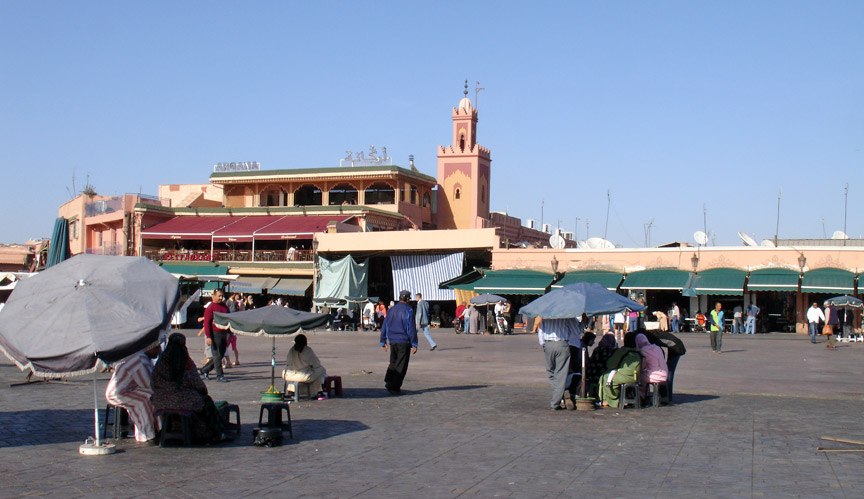
The square is edged along one side by the Marrakech souk, the traditional North
African markets which service both the common daily needs of the people of the
city, and the tourist trade. On other sides are cafe terraces to escape from the
noise and confusion down in the square, and on yet other sides are hotels and
gardens. Narrow streets lead into the alleys of the medina quarter, the old
city. The photograph illustrating this article shows the entrance to the souk at
the left, cafes in the centre, and the entrance to the medina via the Street of
the Olive (derb al zitoun) on the right.
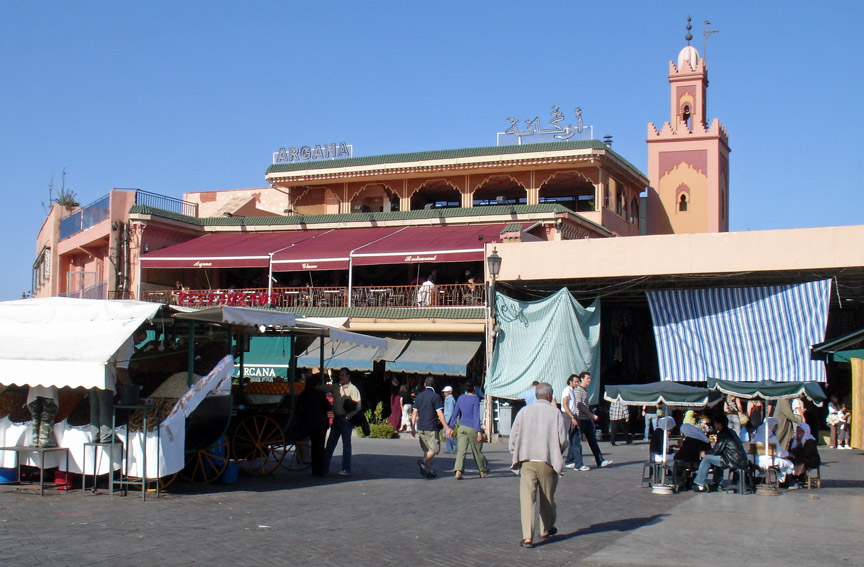
Once a bus station, the place was closed to traffic in the early 2000s. The
authorities are well aware of its importance to the tourist trade, and a strong
but discreet police presence ensures the safety of visitors.
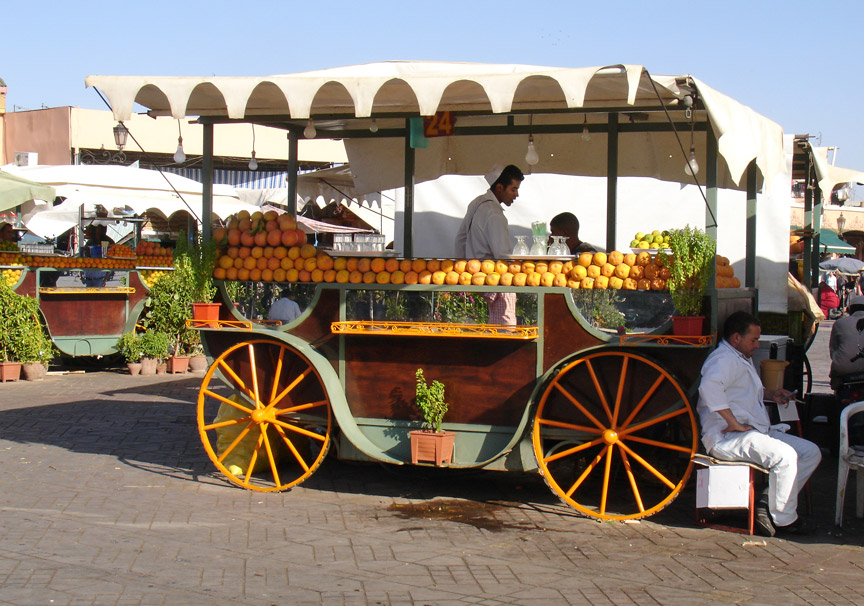
The award-winning documentary "Morocco: The Past and Present of Djemma el Fna"
features the storytellers, musicians, acrobats and snake charmers of this
celebrated crossroads of Arab and Berber cultures, with historical commentary
provided by the noted Moroccan scholar Hamid Triki.
Text from Wikipedia

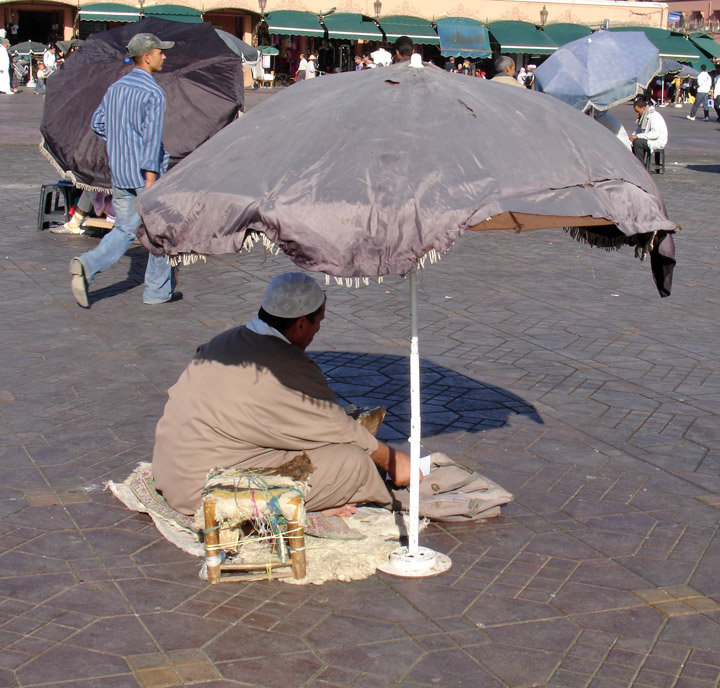
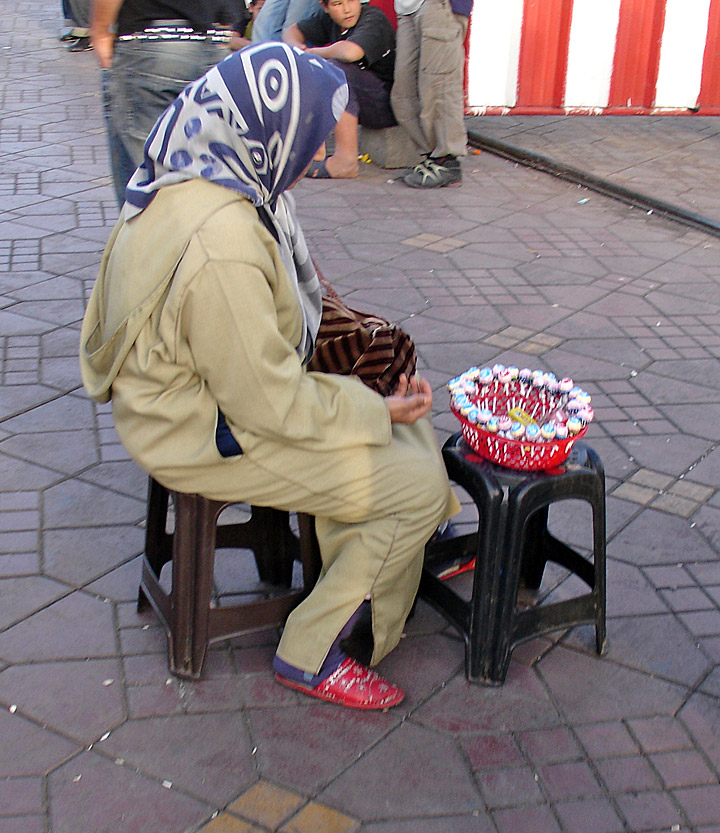
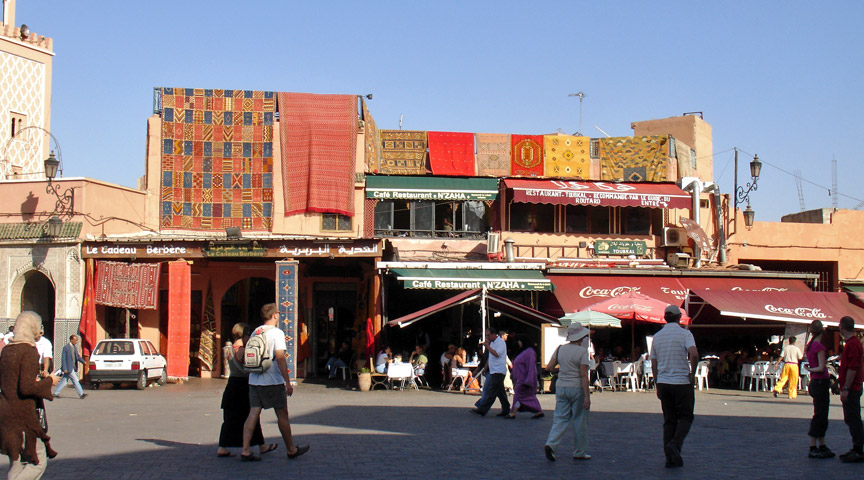
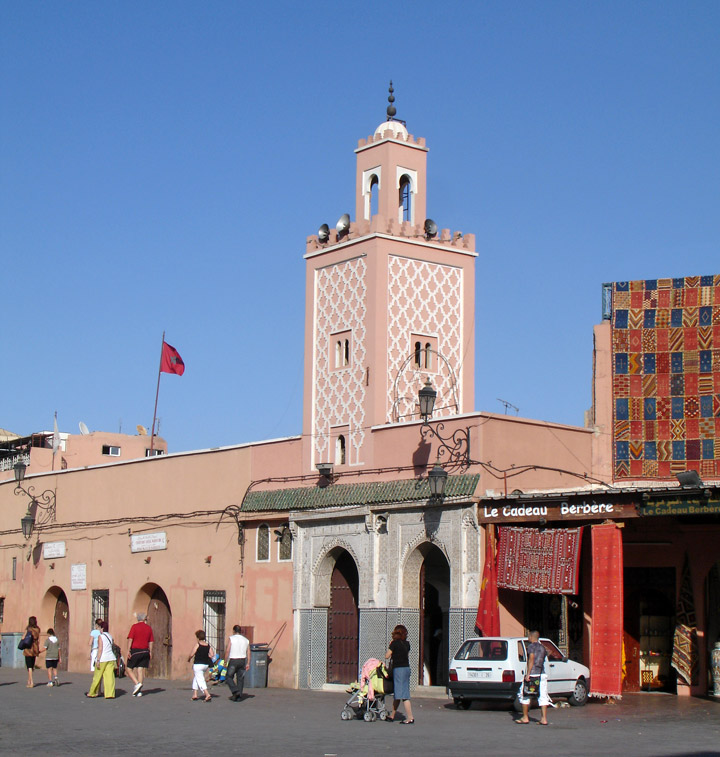
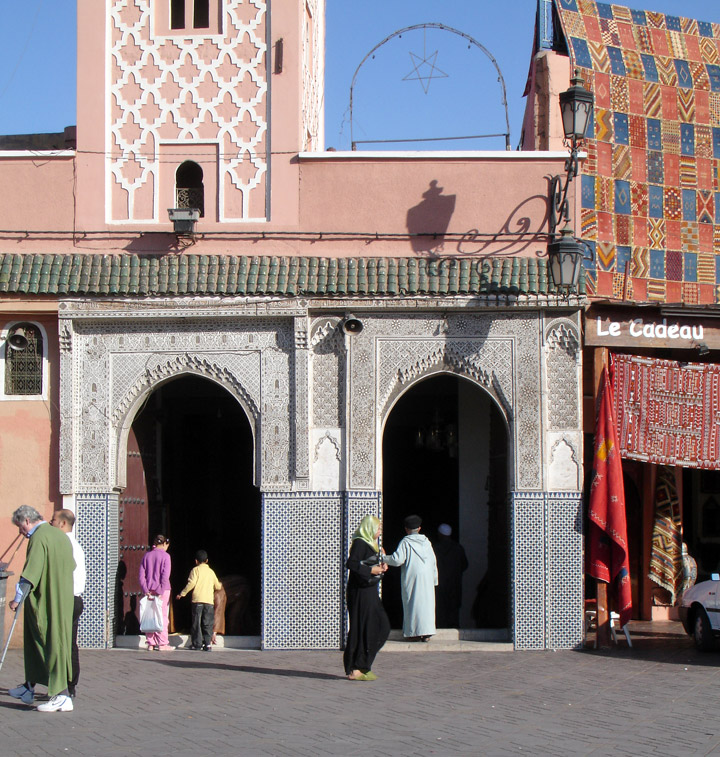
called to prayer
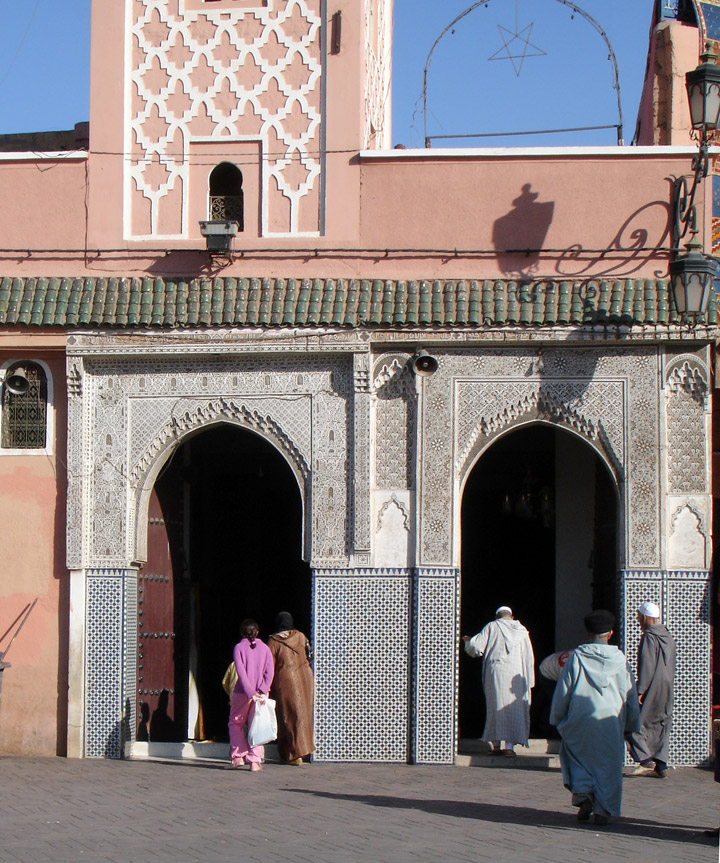
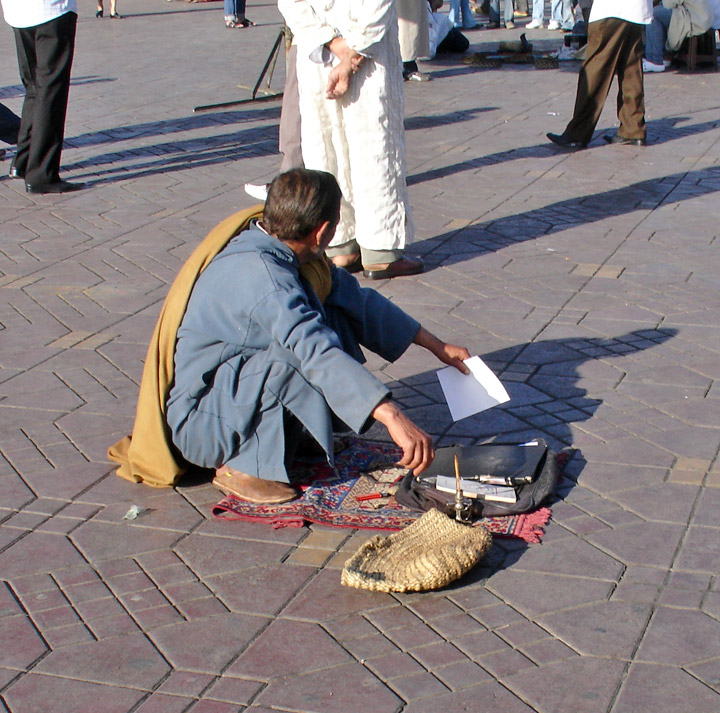
can write your letter for a fee
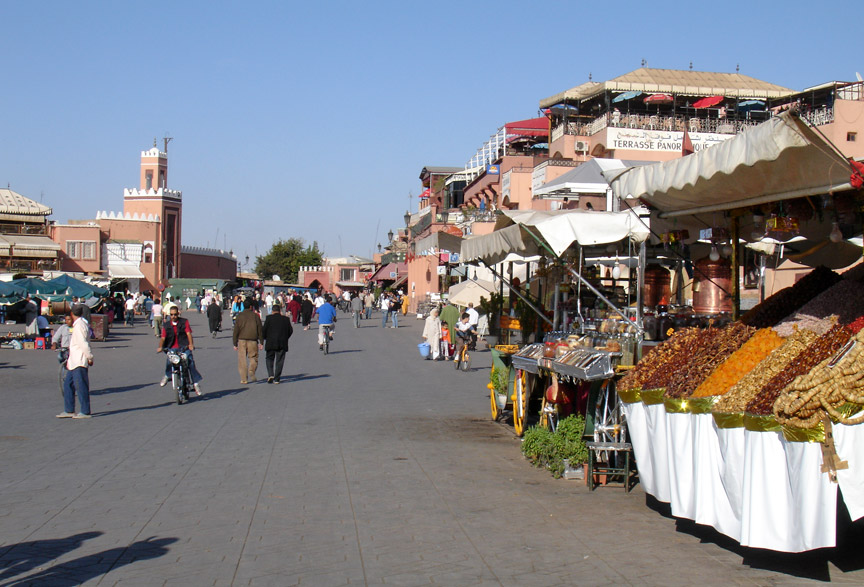
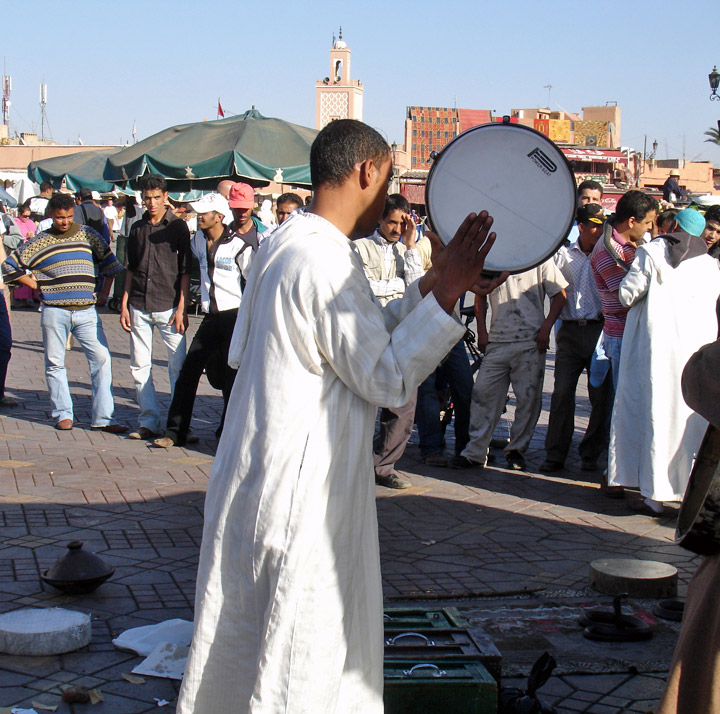
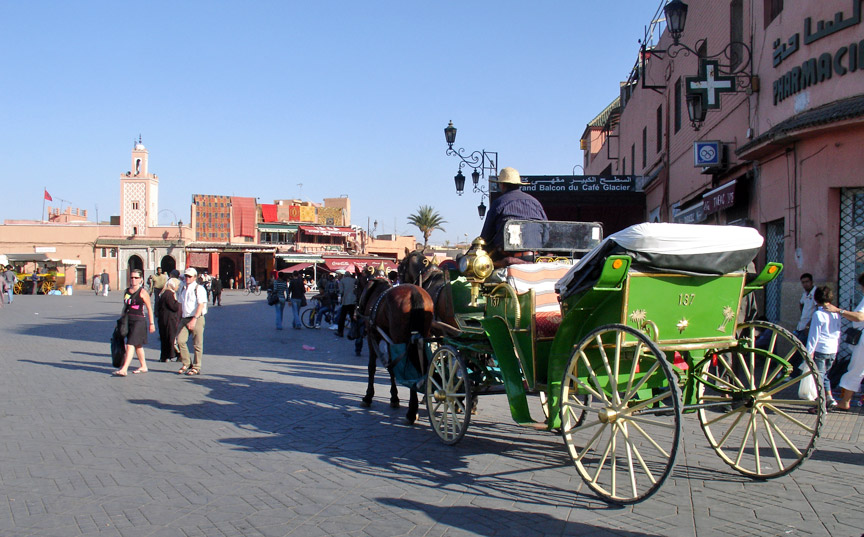
at Dusk

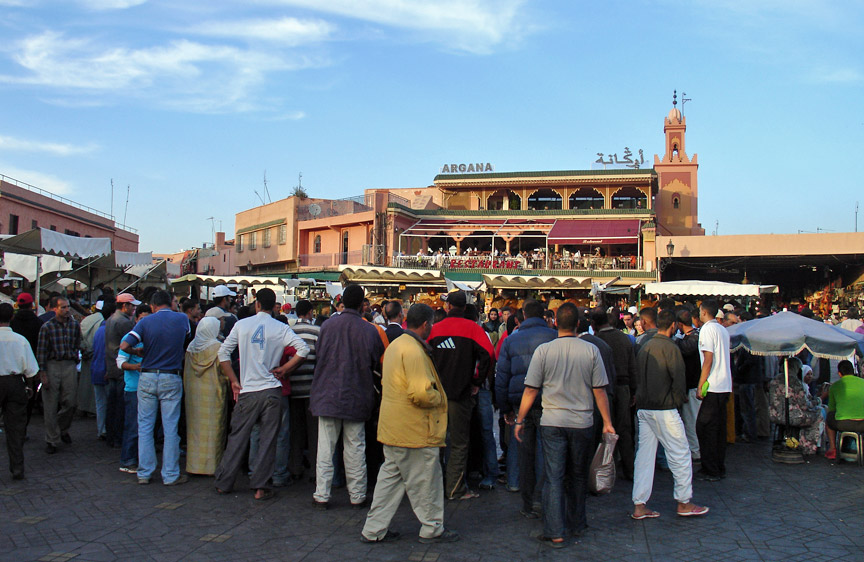
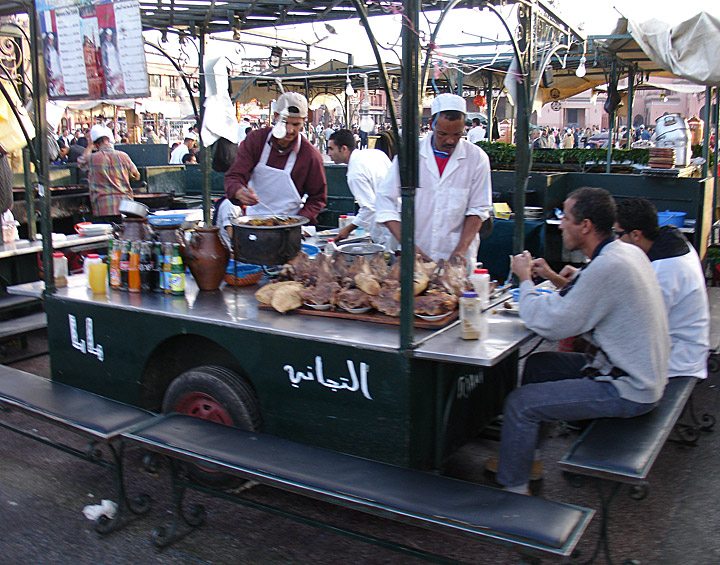
restaurants on carts

portable dining area
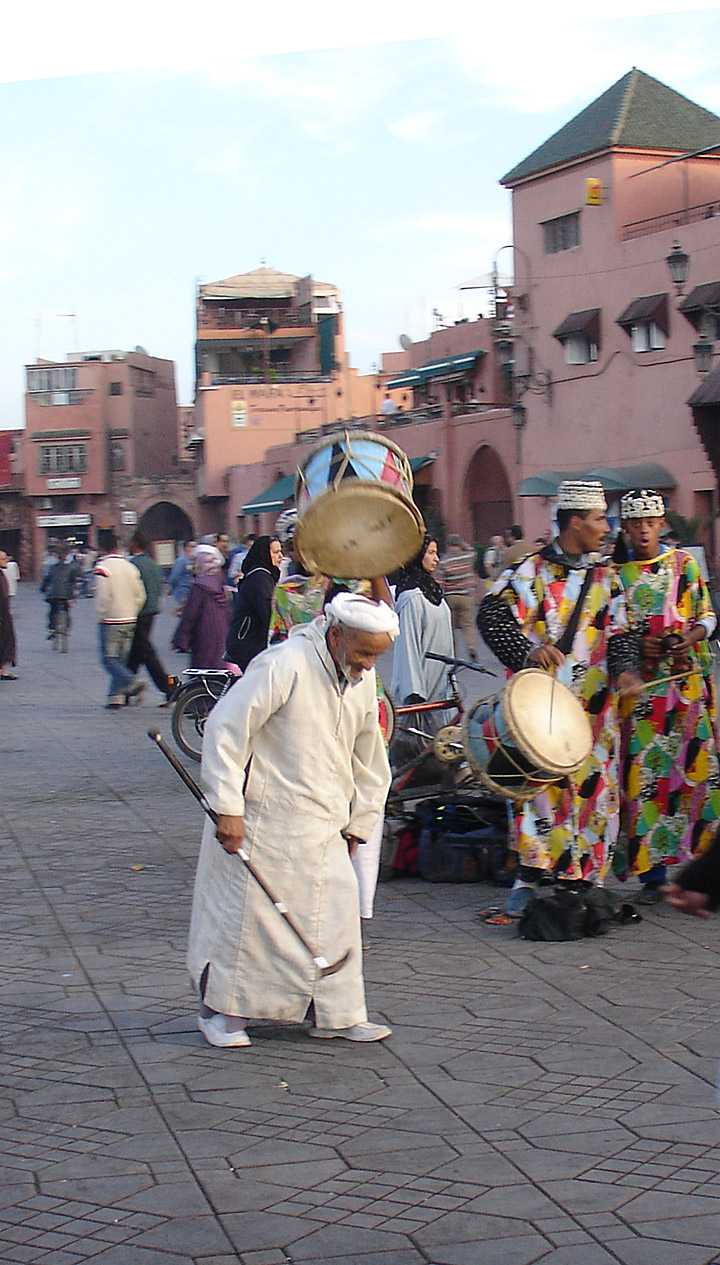
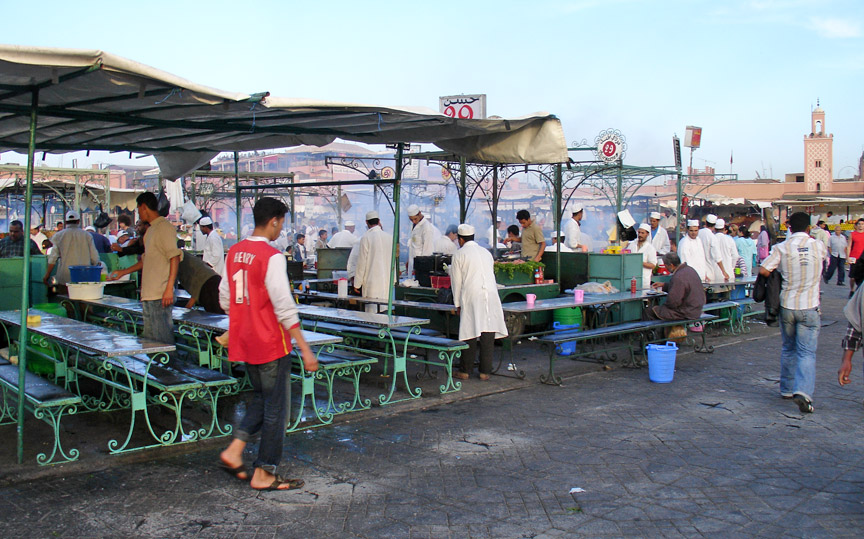
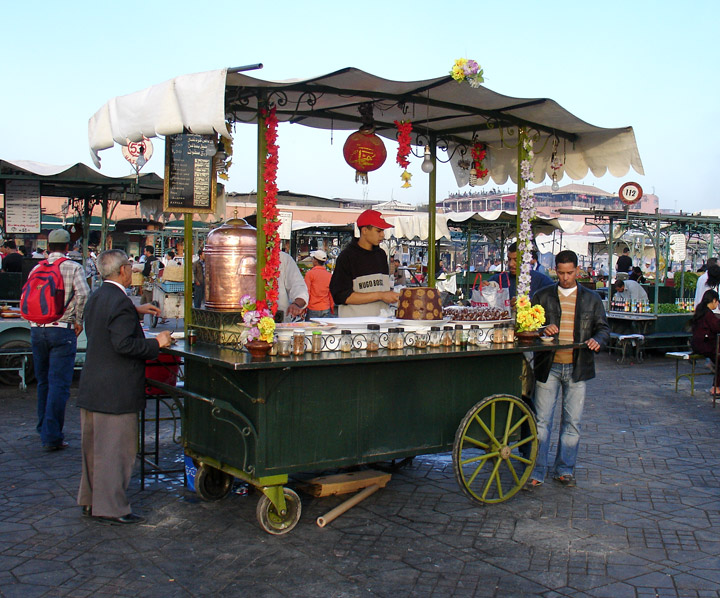
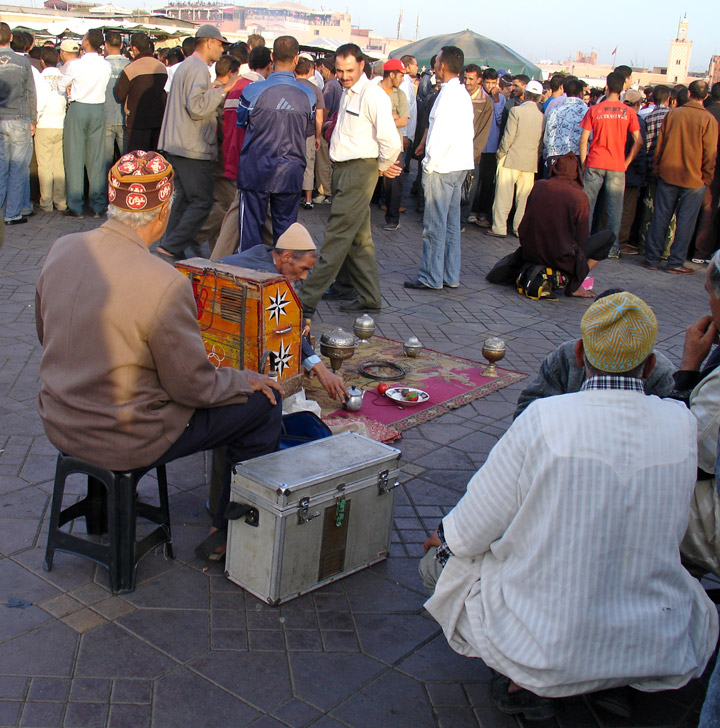
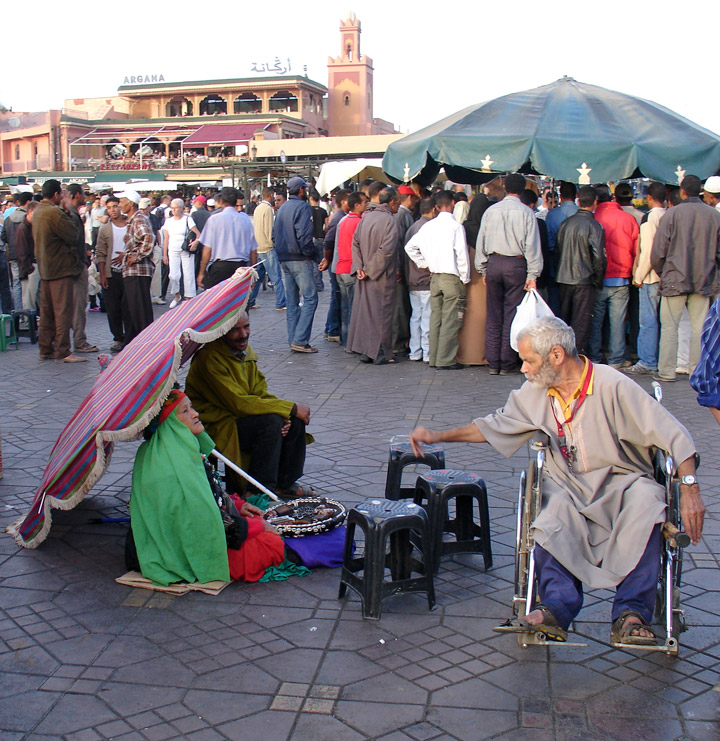
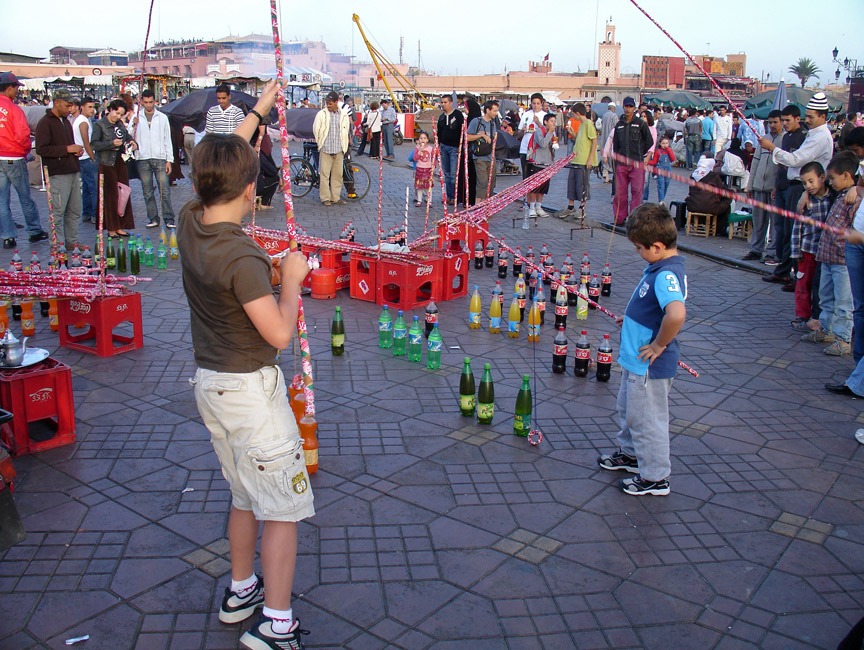
lasso a drink bottle


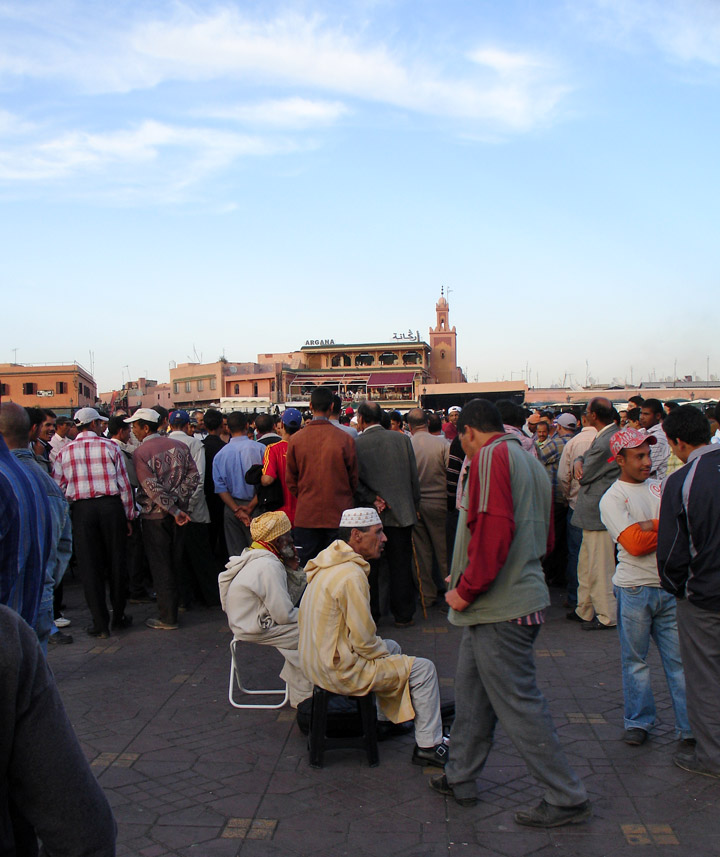
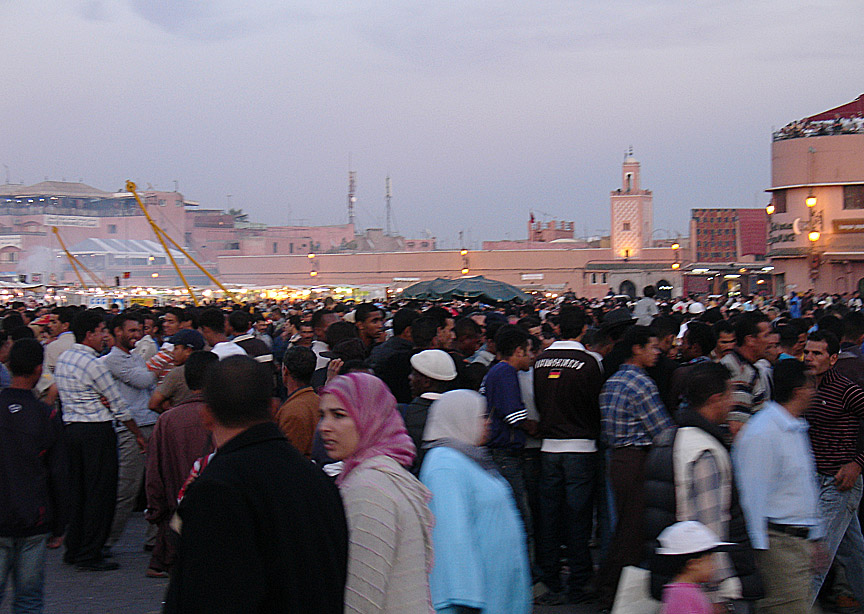
the crowd at dusk
